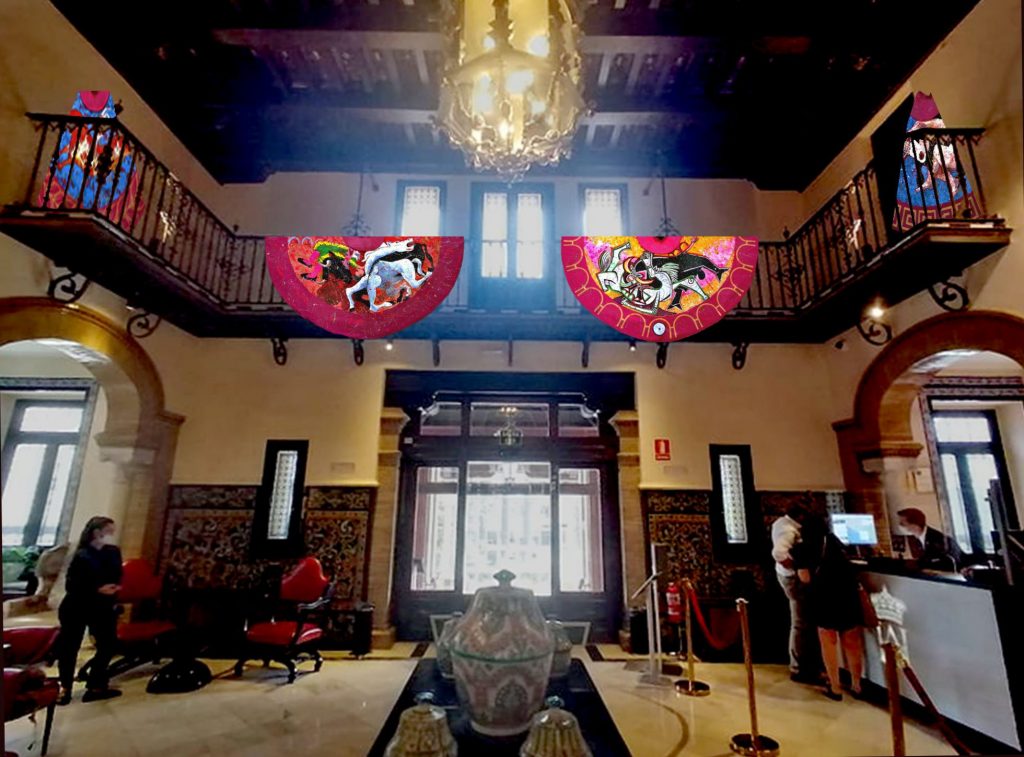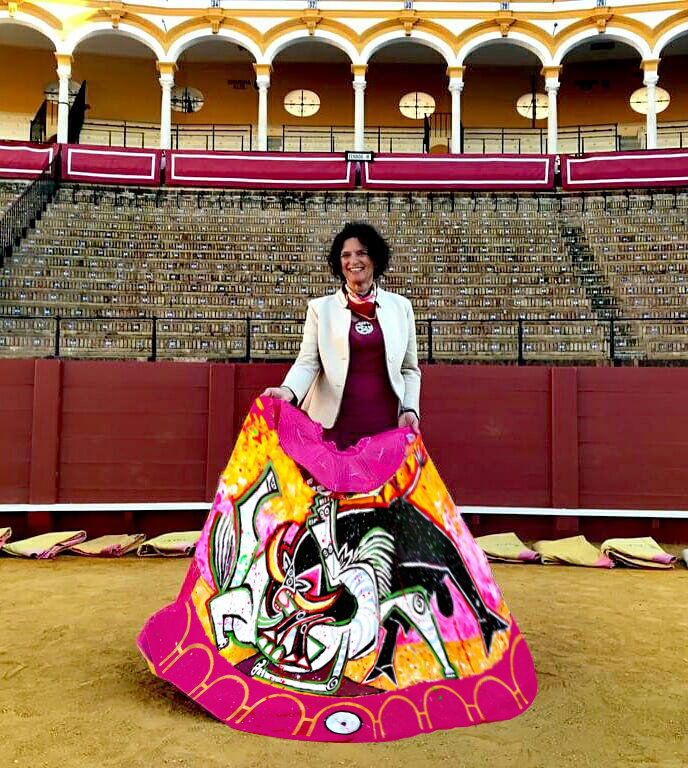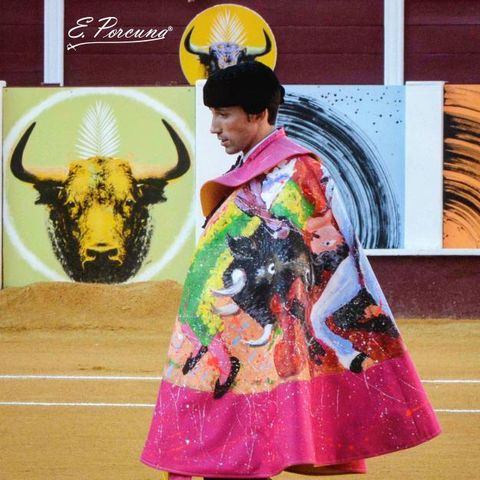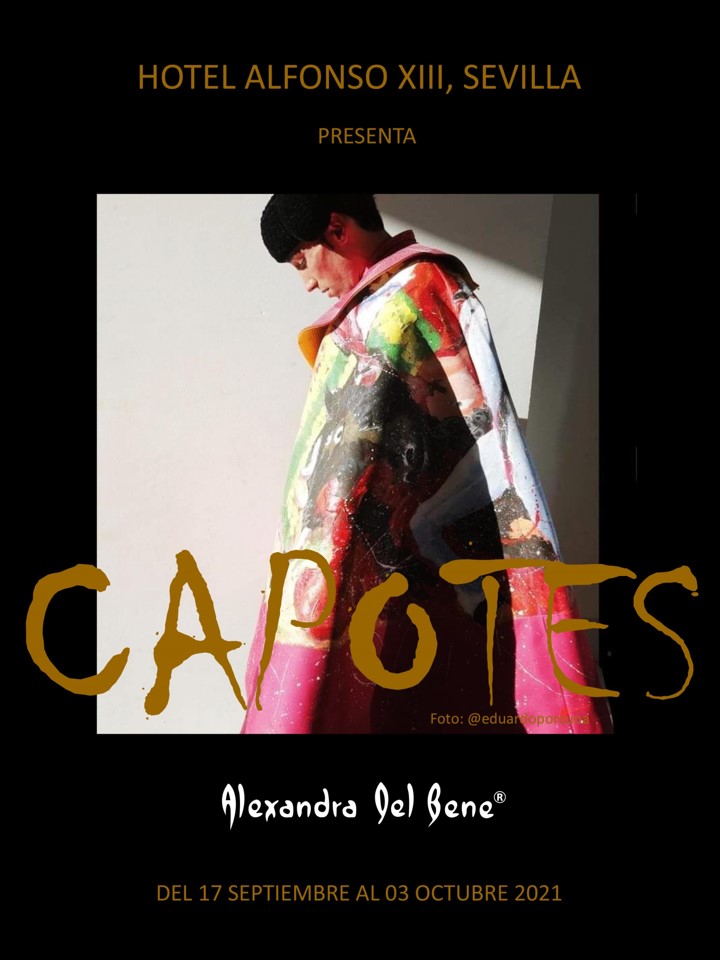
“CAPOTES”. Remontándose a los inicios de la tauromaquia, la autora recrea en sus capotes desde el toro mitológico de la isla de Creta, del Palacio de Minos, hasta el mito de Europa, pasando por las operas de Picasso, la crónica de las raíces del toreo. Las cenefas que enmarcan las escena nos cuentan que por aquel entonces no existía la costumbre de cortar orejas y por ello a Teseo le concedieron en su lugar la corona de laurel de los triunfadores. Alexandra del Bene plasma con maestría desde la mitología griega la historia de la tauromaquia, que quedará “grabada” para la posteridad en el vuelo de un capote.
****
“CAPOTES”. The artist recreates in her capotes from the mythological bull of the island of Crete in the Palace of Minos, to the myth of Europe, passing through the work of Picasso, the chronicle of the roots of bullfighting. The borders that frame the scene tell us that at that time there was no custom of cutting off the ear and for this reason, Theseus were granted the crown of the hour of the winner instead.

****
This cape inspired by Picasso’s opera “Guernica”, was worn in the Picassian bullfight at the Plaza de Toros “La Malagueta” in Malaga. on 08/19/2019, by Maestro David de Miranda together with J. María Manzanares and El Juli. The artist offers us a very worthy version of that bullfighting composition and, of course, on a much more appropriate “canvas” than the unstable canvas of the original, including a bullfighter in the composition, an essential element of the fight.
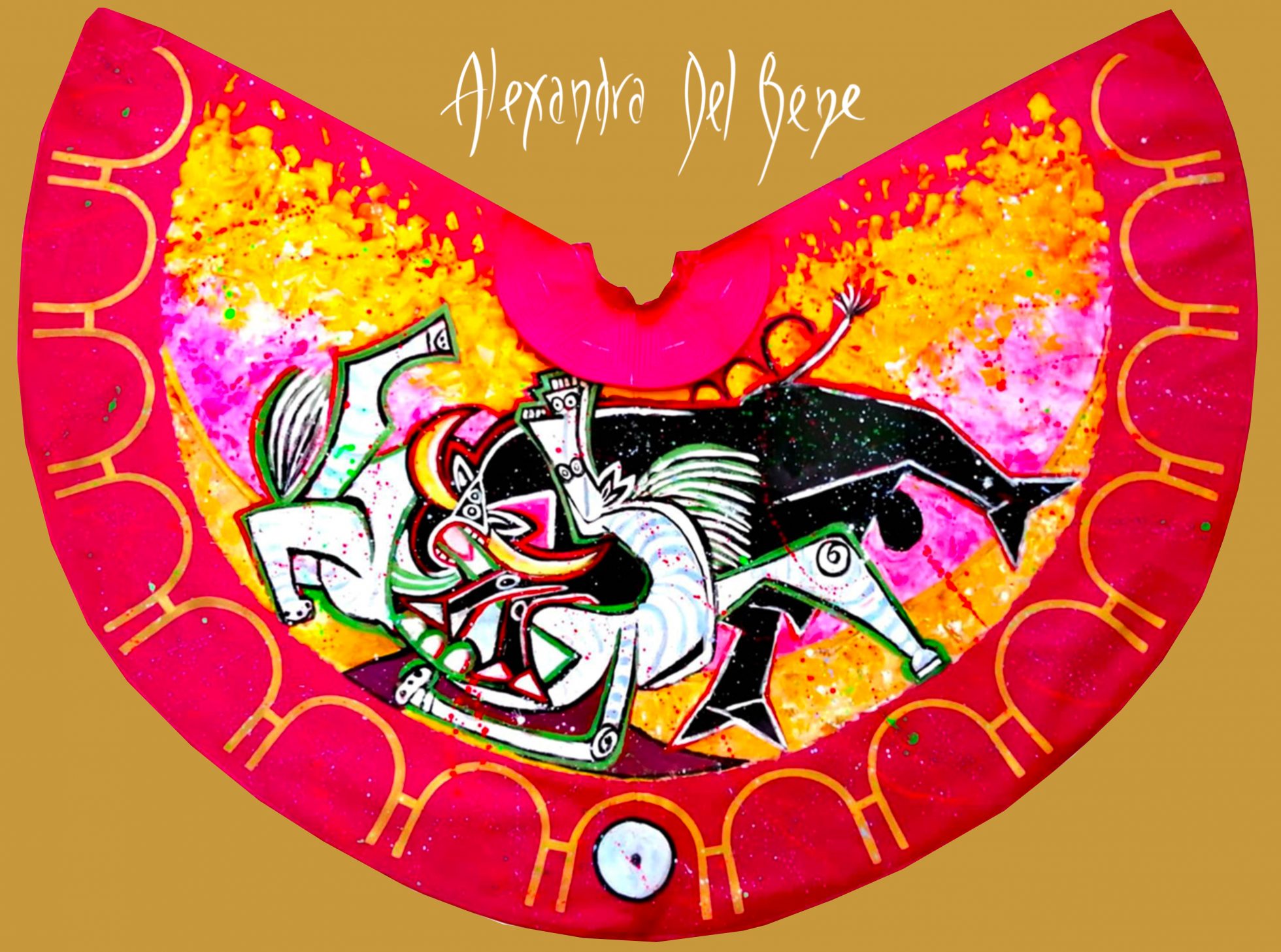
Nuevamente Picasso aumenta su gloria gracias a Alexandra del Bene que vuelve a inspirarse en el sobrepuesto lienzo “Guernica” para realzar al mito y dar color a esta sombría pintura. Atención, porque el reloj de la Maestranza, cuya arcada enmarca el capote, se acerca a las cinco de la tarde. Algo mágico se presagia en esta hora tan taurina inmortalizada por García Lorca.
****
Once again, Picasso increases his glory thanks to Alexandra del Bene who once again takes inspiration from the superimposed canvas “Guernica” to enhance the myth and give color to this dark painting. Attention, because the Maestranza clock, whose arcade frames the cloak, is approaching five in the afternoon. Something magical is foreshadowed in this bullfighting hour immortalized by García Lorca.
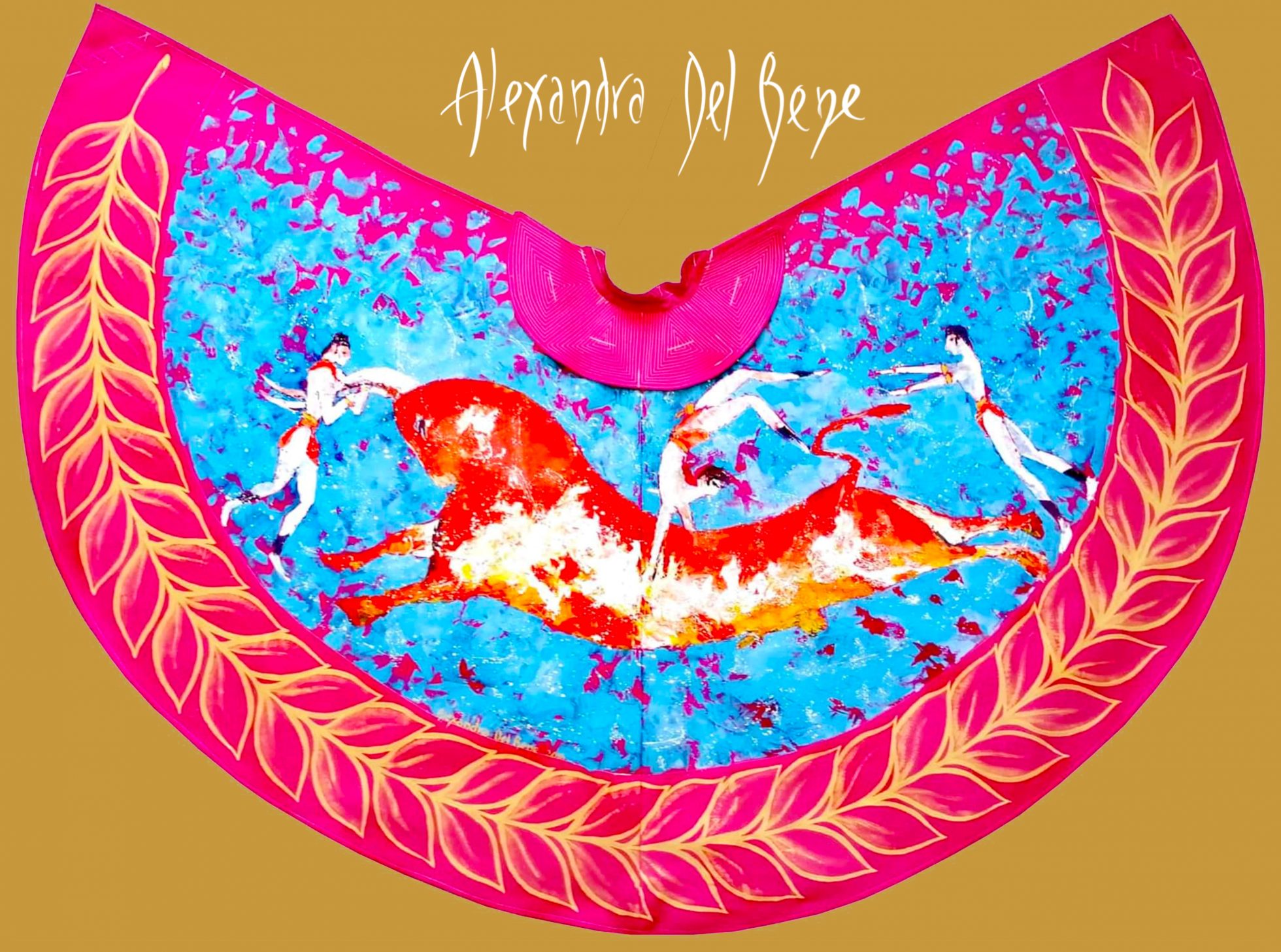
****
Going back to the beginnings of bullfighting, the author recreates in her cape the Cretan bull, a mythological animal that the god Poseidon made out of the sea in the time of King Minos and with which Queen Pasiphae fell madly in love and they had a son: the Minotaur . The king, who already had horns on his mother’s side, commissioned the “forçado” Heracles to fight the Portuguese bull from Crete and return it to the sea without killing it, but the bull escaped and, given his ferocity, it was necessary to resort to the “right-handed” Theseus of Athens, number one in the ranks of his time, who managed to kill him with an accurate thrust in the first fight held on the plain of Marathon in the open field. Up to here, more or less, the bullfighting chronicle of the painting recreated in Alexandra’s cape. The border that frames the scene seems to tell us that at that time there was no custom of cutting ears and for this reason, Theseus were awarded the laurel wreath of the victors instead. Alexandra del Bene masterfully captures this part of Greek mythology that will be “recorded” for posterity in the flight of a cape.
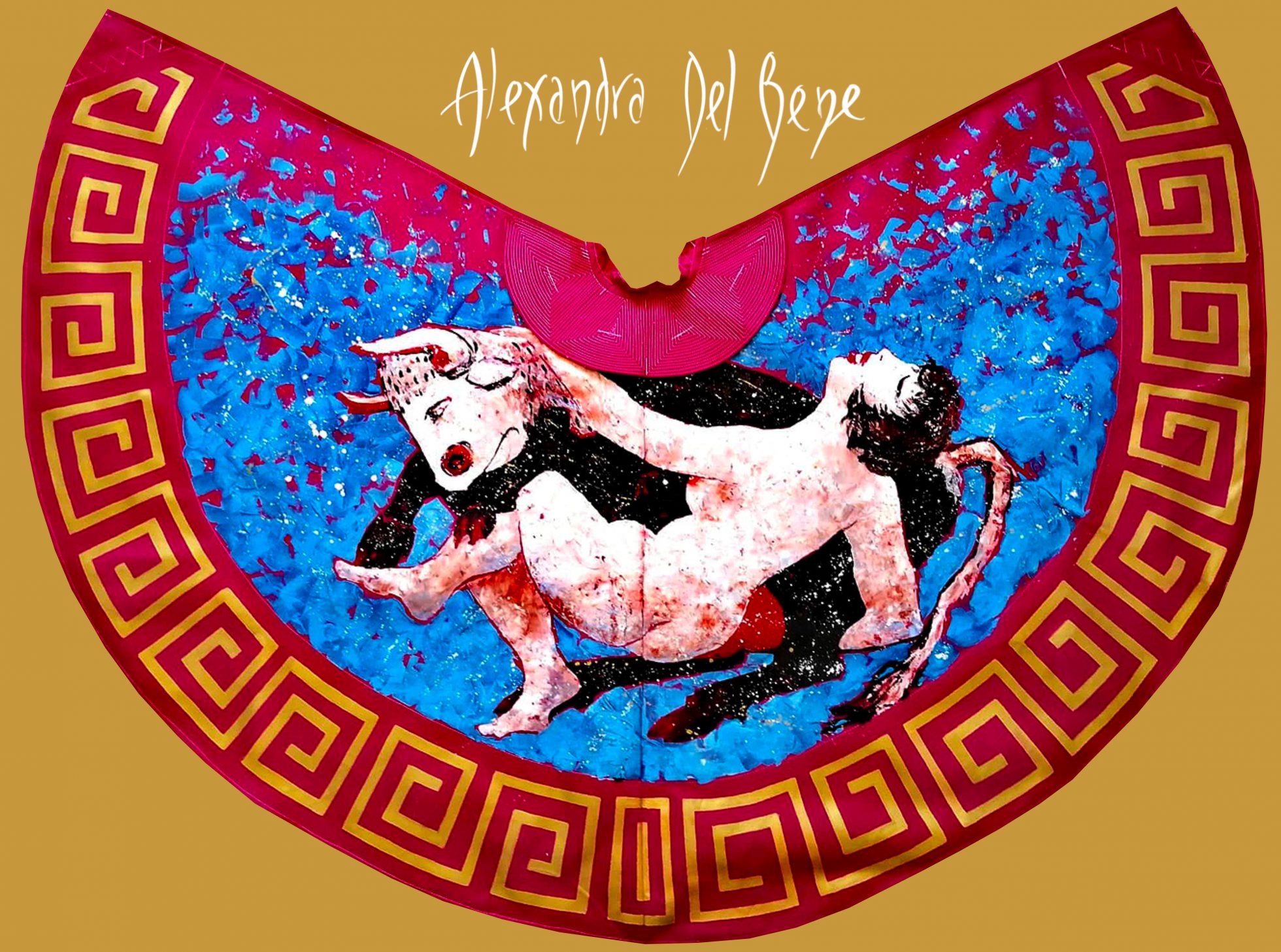
El rapto de Europa podría llamarse esta recreación, donde la artista nos brinda esta escena mitológica de una vieja paradoja: la de una fenicia de Tiro que da nombre a Europa. Si tradujéramos esta escena al ámbito de la tauromaquia, podríamos pensar que estamos ante la primera casta fundacional del toro de lidia que tiene su origen en la unión del dios Zeus convertido en toro y Europa, de donde nace el rey Minos. De esta primera camada surge el encaste del toro de Creta y Pasifae, la esposa de Minos, que da lugar al Minotauro, no apto para la lidia.
****
The abduction of Europa could be called this recreation, where the artist gives us this mythological scene of an old paradox: that of a Phoenician from Tire that gives Europe its name. If we were to translate this scene into the field of bullfighting, we might think that we are dealing with the first founding breed of the fighting bull that has its origin in the union of the god Zeus turned into a bull and Europa, from which King Minos was born. From this first litter arises the encaste of the Cretan bull and Pasiphae, the wife of Minos, which gives rise to the Minotaur, unfit for fighting.
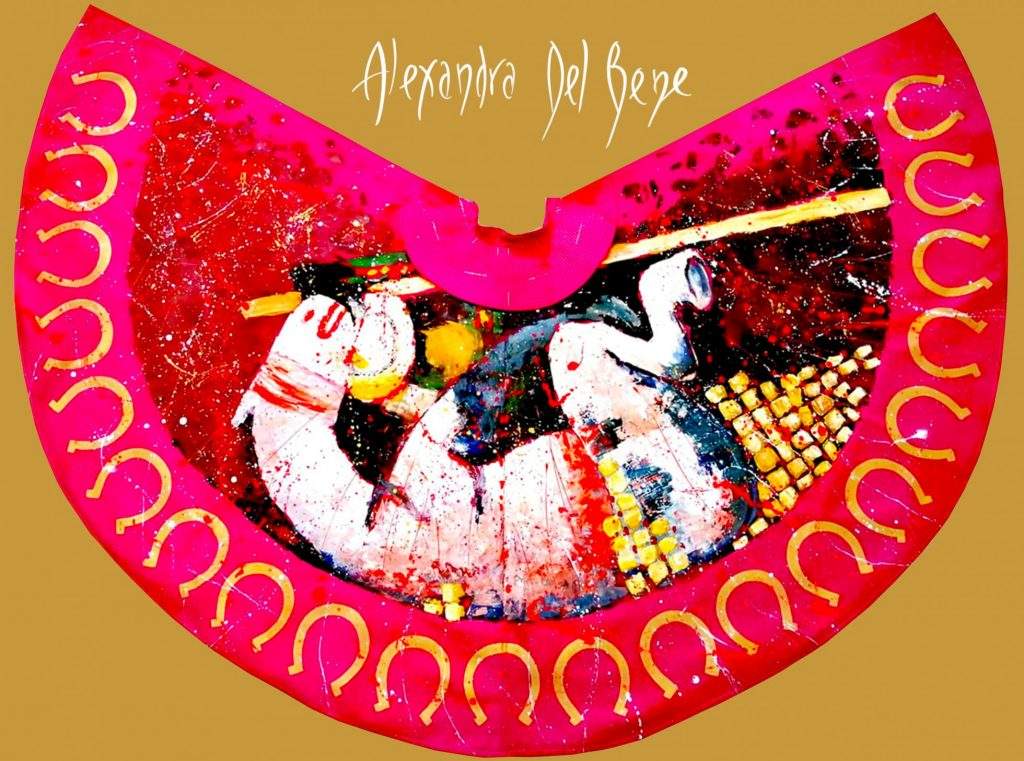
****
The Corridas is not without risk and the artist’s imagination has wanted to place it in a picador fallen under his horse knocked down by the bull when he performed the fate of rods. Things that happen. But that’s what the “capotazos” are for and the “monosabios” will surely resolve the situation satisfactorily by putting the knight back on his saddle.
